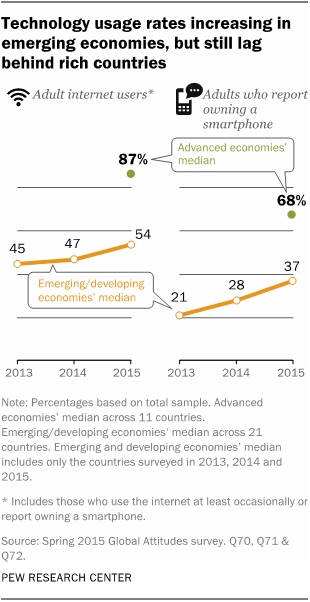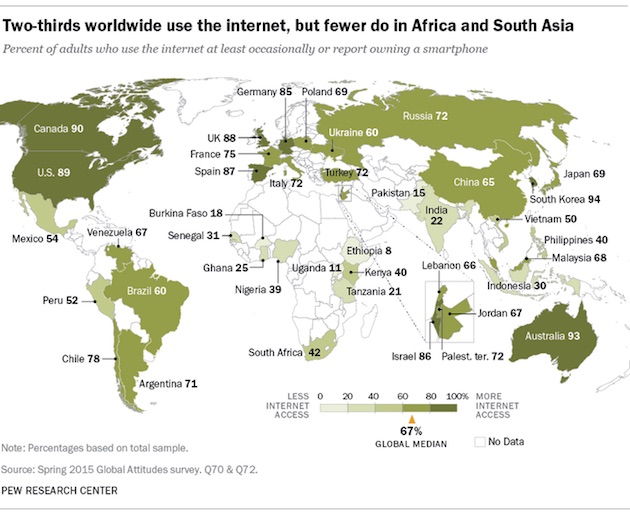Internet and smartphone access is increasing rapidly, but large gaps remain between developed and emerging economies, according to recent data from the Pew Research Center.
The report was based on data from a survey of adults in 40 countries (a combination of developing and advanced economies); smartphone users were automatically included in the Internet user data set.
The median rate of Internet access around the world is 67%, the analysis found, with overall usage increases being driven by large emerging economies such as Malaysia, Brazil, and China.
However, a large gap remains between developing and advanced economies: A median of 54% of adults in emerging economies use the Internet compared with 87% in advanced economies.
As for smartphone ownership, the digital divide between less-advanced economies and developed economies was 31 points in 2015.
Smartphone ownership in developing nations is rising at an extraordinary rate, Pew found, climbing from a median of 21% in 2013 to 37% in 2015.

The countries with the highest rates of Internet access are South Korea (94%), Australia (93%), and Canada (90%); the countries with the lowest Internet access rates are Ethiopia (8%), Uganda (11%), Pakistan (15%), and Burkina Faso (18%).

The countries with the highest rates of smartphone ownership are South Korea (88%), Australia (77%), and Israel (74%); the countries with the lowest rates of smartphone ownership are Ethiopia (4%), Uganda (4%), Pakistan (11%), and Tanzania (11%).

About the research: The report was based on data from a survey of adults in 40 countries (a combination of developing and advanced economies); smartphone users were automatically included in the Internet user data set.




